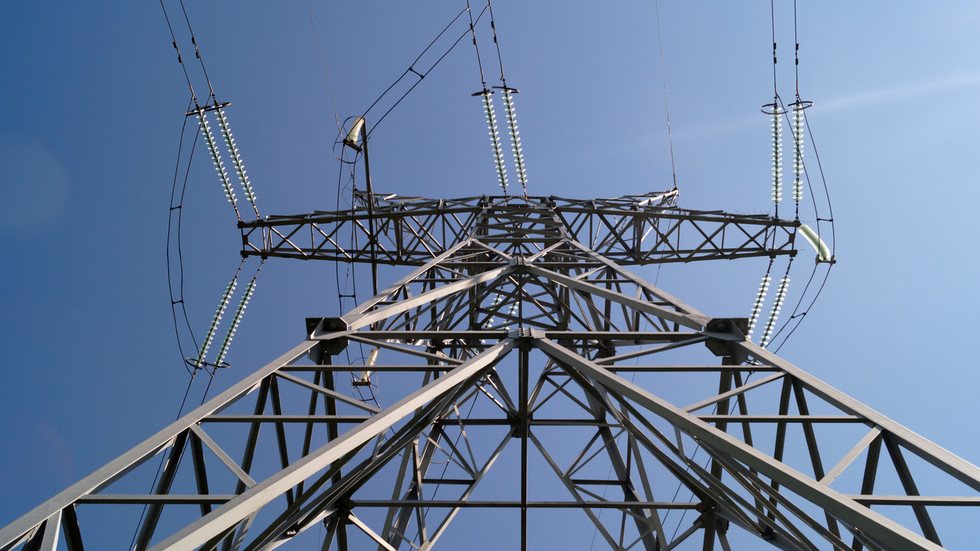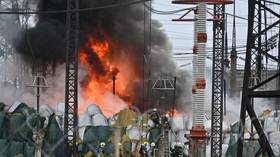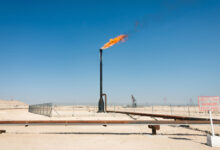
Kiev has also halted electricity exports after a series of attacks on its energy system

© Getty Images / Ruslan Danyliuk
Ukrainian electricity imports have risen almost threefold, according to the Energy Ministry in Kiev, which also said the country has ceased almost all exports of electrical power following Russian strikes on infrastructure.
Ukrainian Energy Minister German Galushchenko previously announced that power generation facilities, along with transmission and distribution systems, had been damaged across the country after the Russian military launched a powerful wave of air and missile strikes.
“For the current day, imports of electricity are projected to be 14,900 megawatt-hour (Mwh), while no exports are expected,” the ministry said on Sunday in a statement issued on Telegram.
On Saturday, Ukraine imported 12,784 Mwh of electric power, while its daily power exports amounted to 1,033 Mwh. The ministry’s projections for electricity imports had not exceed 6,000 Mwh in the preceding days.
The ministry further claimed that Russia had attempted to strike a critical energy infrastructure facility in the Lviv region on Sunday, after the facility had already caught fire and been de-energised. Power lines in the Kiev region were reportedly damaged as a result of the attack, with 1,400 households in two settlements suffering temporary blackouts.
On Friday, a Russian missile strike targeted the Dnieper Hydro Power Plant (HPP) in the Ukrainian-controlled city of Zaporozhye, Ukrhydroenergo reported, adding that the facility had caught fire. At the same time, videos and photos circulating on social media appeared to show a fire on a dam adjacent to the Dnieper HPP.

The barrage had stripped the DTEK group, Ukraine’s largest private power generating company, of 50% of its generating capacity, according to the head of the Yasno distribution firm, Sergey Kovalenko.
Meanwhile, massive blackouts were reported elsewhere across the country, including Kharkov, Odessa, Dnepropetrovsk, Vinnitsa, Lviv, Ivano-Frankivsk, and Nikolaev regions. Ukrainian President Vladimir Zelensky claimed that Moscow had used more than 60 drones and around 90 missiles of different types in the barrage.
Commenting on the strikes, Russian MP Mikhail Sheremet stated they were in response to Ukrainian attacks on Russian civilians in Belgorod and other border areas, which left dozens of civilians dead.
Moscow began targeting Ukrainian energy infrastructure in the autumn of 2022 in retaliation for the bombing of the strategic Crimean Bridge in October of the same year. While Kiev initially denied responsibility, it later claimed that the attack was intended to undermine Russian logistics.
On Monday, the chief of the Security Service of Ukraine, Vasily Malyuk, said the agency was responsible for the strikes on major Russian oil refineries. The facilities, along with other Russian infrastructure, are seen by Kiev as “legitimate targets,” he added.
For more stories on economy & finance visit RT’s business section




